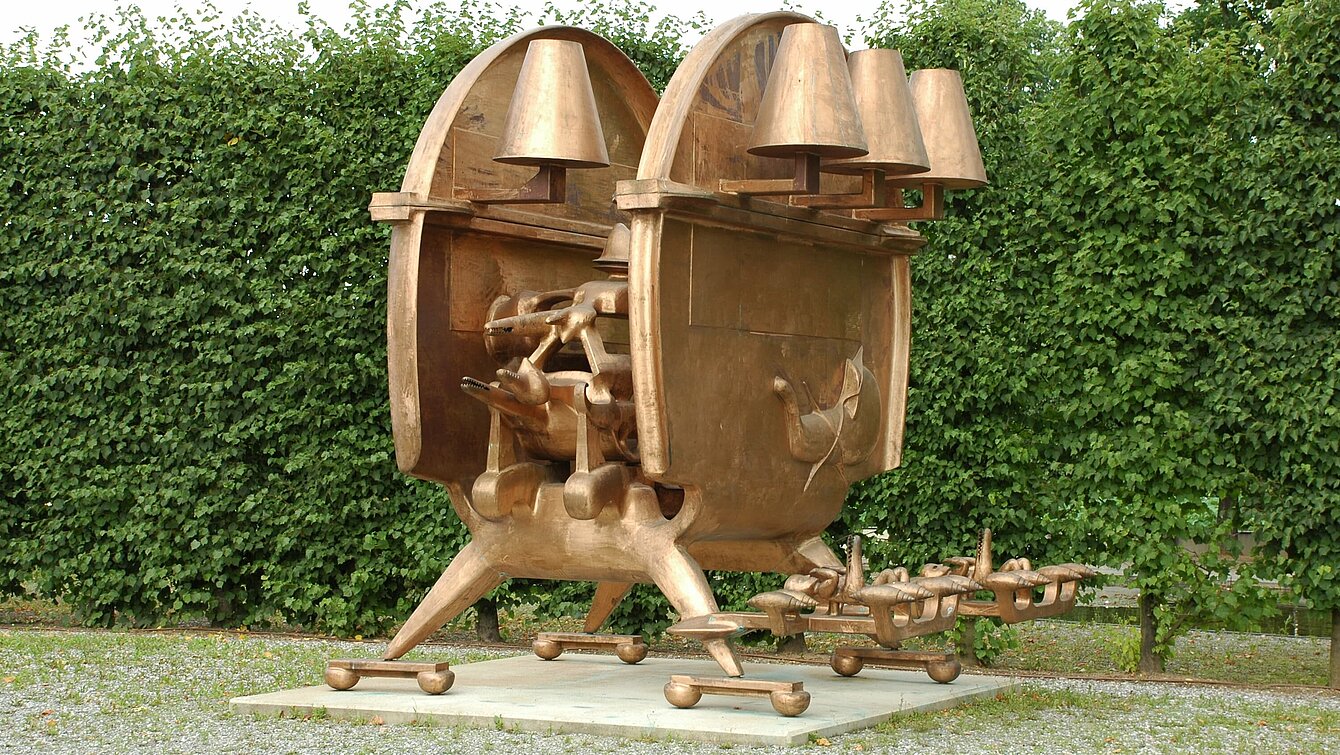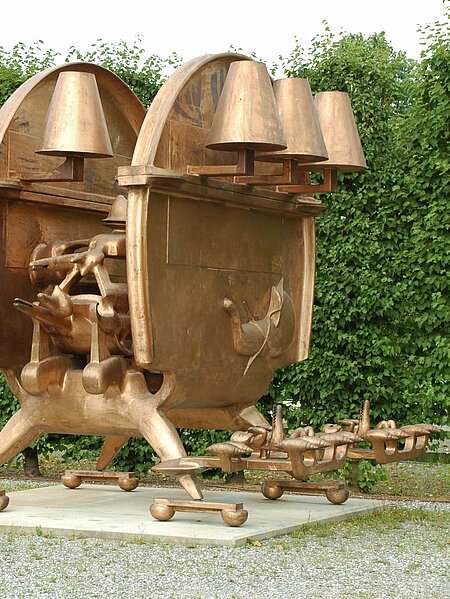Gironcoli saw his monumental works as organisms that reflect processes such as growth and decay, or life and death. In its juxtaposition of the elements of life with machine-like, technoid structures, this sculpture points to the rigid inexorability of social and economic processes. What appear to be naturally grown elements are austerely structured ones; the human meets the machine. This creates a tension that gives us the sense there is something alive about the object. It feels as if, at any moment now, it could start moving.
Untitled
Bruno Gironcoli, 1995/96


Image Credits
Author
Peter Peer
Location on map
Position 34
Owner
Leihgabe
Artist biography
Bruno Gironcoli
Show all
About the sculpture
Bruno Gironcoli began at the end of the seventies to create the monumental sculptures that became so characteristic for his creations. They owe their typical appearance to a structure which is both ambivalent and differentiated, a hybrid mixture of the most diverse of elements, in which vegetable elements are juxtaposed with strictly geometrical ones; anthropomorphic elements grow besides mechanistic ones, lending these powerful figures their technoidal biomorphic appearance.
Despite this clear approximation of his figurative world to reality, Gironcoli sees in all his elements first of all the sculptural idea, the formal aesthetical thought beyond conventional meaning. Consequentially, however, it is not only the character of the object that the works try to convey.
At the beginning of the 1960s Gironcoli first encountered surrealist sculpture and Alberto Giacometti’s work. He embarked on dealing with the downsides of human existence, with violence, oppression and even taboos of sexuality. This thematic complex is also at the basis of his large-scale sculptures.
Gironcoli understands them as organisms reflecting archaic processes such as coming into being and decay, and life and death. By incorporating symbols of fertility and life in these machine-like constructions, he refers to the rigid implacability of natural processes, as well as social and economic ones. Processes that, in rigid perfection, weave the individual in a continuous stream of concessions and dependencies suffocating any kind of individuality and sensuality with their totalitarian pretence.
Not least, these works are expression of a general cultural state, manifesting itself for the artist in oppressed passion, growing incapacitation and fear of life.



















